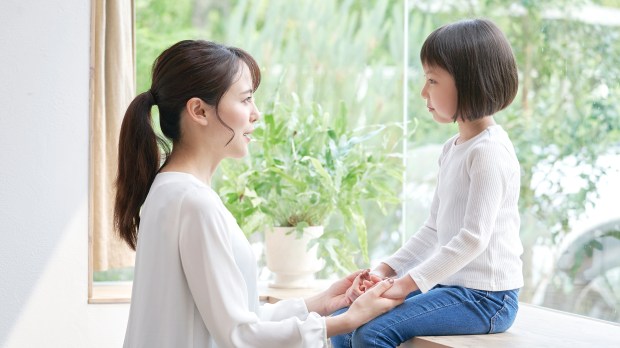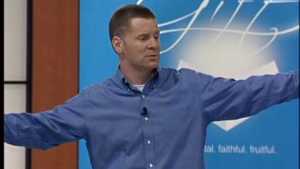As parents, we begin teaching our children about the parts of their body when they’re very young. They learn to point to their ears, eyes, mouth and nose, bellybutton and toes; then as they get older they discover more about how their bodies work.
As Catholic parents we don’t just want to convey biological information, though — we want our children to learn the meaning and purpose of their bodies. Where do we begin, and how do we communicate that to younger kids?
When St. John Paul II was pope, he delivered a set of teachings during his Wednesday audiences over about a six-year period. About 135 of these were brought together and now constitute what is known as the “theology of the body.” This theology asks and answers questions such as: Why did God give us bodies? What does it mean to have both a body and a soul? What does it mean to be made in God’s image and likeness? What should we do with our bodies? What did Jesus show us about the purpose of our bodies?
Needless to say, the theology of the body is a rich and complex theology that will be unpacked and developed for many years to come, but it has plenty to teach us right now about relationships and love, sex and gender, identity and purpose. There are also basic principles that every parent can instill in their children from a very young age, which will profoundly serve them as they go through every stage of life.
Here are 3 simple truths that every young child should know about his or her body:
1. Your body is good.
God made the world and everything in it out of love. In Genesis we read that God made man in His own image, male and female He created us. We are body and soul — both together make up who we are as human beings. When sin entered the world it didn’t make our bodies bad — it destroyed the original unity we had with God, with each other, and with ourselves. Sin brought death and decay to our bodies, but it didn’t take away our goodness rooted in God’s love.
How do we practically convey that the body is good to young children? We can point out the beauty of their bodies … the softness of their skin, the color of their eyes, the wonder of their movements. We can make sure we don’t criticize our own body, but praise it for how it looks and the many things it does for us. We can examine our own attitudes about the body and make sure that the ways we talk about the body and how we behave in our daily life conveys that we believe the body is beautiful, made by God in His image and likeness, and very good.
2. Your body is a gift.
Without our bodies we wouldn’t be human. Our entire body is a gift — hands and feet, muscles and organs, cells and synapses. If our bodies are a gift, that means there is a gift-giver — God. And gifts are not only to be received with thanksgiving, but they are to be given. We are meant to give ourselves in and through our bodies. We do this when we love ourselves and others.
To teach children that their bodies are a gift, we can point out what their bodies give to them — the ability to move, to learn, to feel, to understand the world. We can talk about how important it is to respect and love God, the gift-giver. Respecting and loving God means thanking Him every day, and honoring his commandments. We can also teach the necessity of respecting and loving ourselves, which means treating our bodies well by washing, brushing our teeth, eating healthy, getting plenty of sleep and exercise, and making good choices. We can point out to young children that when they do chores, their school work, and what is right, they are giving a “gift of self.”
It should also be said that if your child has an illness, disease, or disability, that in no way takes anything away from his or her body as a gift. When sin entered the world, it brought sickness, death, and brokenness — which we all experience in our bodies in one way or another — but so long as we have breath, our bodies are the gifts in and through which we live, love, and give ourselves. Jesus came to restore all things to their original wholeness, and one day, our bodies will be resurrected, fully healed.
3. Your body speaks a language.
“The Body and it alone has the ability to make visible the invisible, the spiritual and the divine.” — Pope John Paul II
What we do with our body matters. Our bodies speak a language. Every gesture, every thought, word, and action, conveys something about who we are and who God is. We can tell the truth or we can tell lies with our bodies. Will we love others genuinely and honestly? Or will we use others for our own gain?
We can teach our children about the language of their bodies by drawing attention to how they use their bodies. We can encourage them to always tell the truth with their bodies. We should acknowledge feelings and name them so children learn to understand emotions and how they are communicated. When a child uses his body to help or hurt someone else, we can point that out by saying things like: “Bobby, hands are not for hitting,” or “Thanks for showing me love with that wonderful hug!” We can also remind children that we worship God with our bodies, even in the smallest ways — kneeling, standing, bringing our hands together, bowing, raising our arms.
In simple, daily ways, we can teach children that our bodies really matter, and that we were made to give glory to God in and through our bodies by using them for love, for relationship, and for worship. With little ones, this is best communicated in simple language and gestures, and above all, by our own example.
‘


